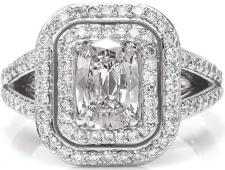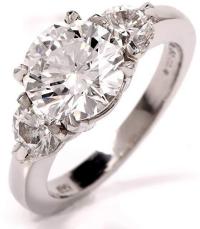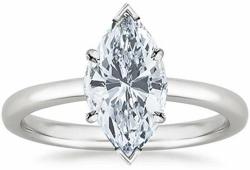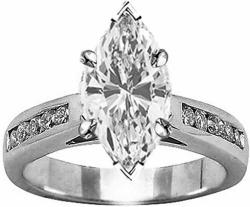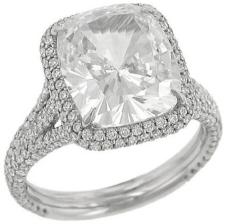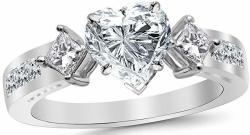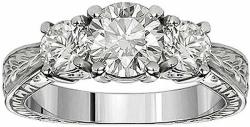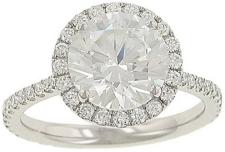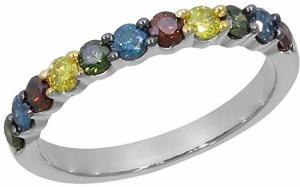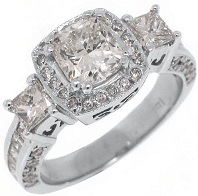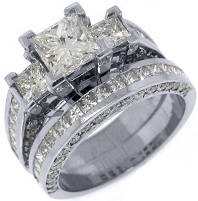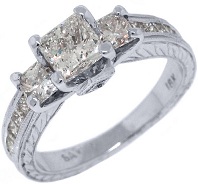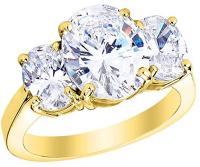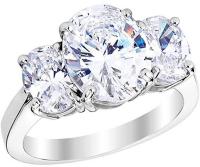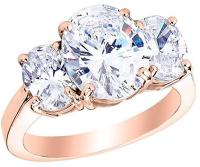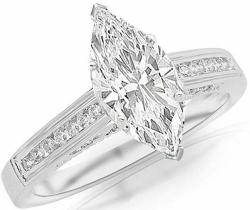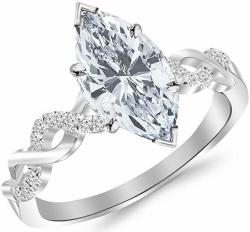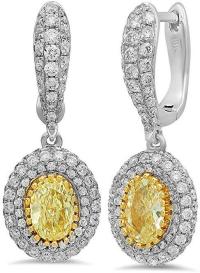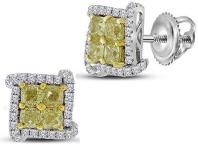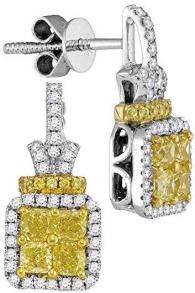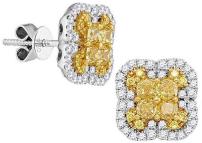Want To Buy A Diamond Without Making A Mistake? Read On…..
How to choose a diamond is probably just one of the many questions crowding your mind if you are shopping for a diamond. How can I be sure whether what I am purchasing is a real natural diamond? How do I come to know if the diamond has been treated?
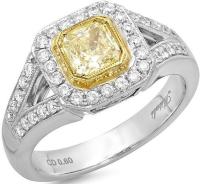
|
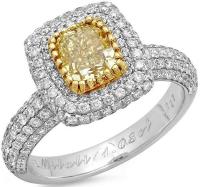
|
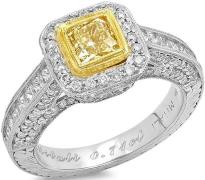
|
||
| 18k White Gold 1.01CTW Womens Diamond Engagement Diamond Rings | 18K Gold 2.35CTW Diamond Ring Jewelry | 1.74CTW Diamond Wedding and Engagement Rings for Women in 18K White Gold |
Click On The Images
The key to understanding a diamond and its value is to understand its 4 attributes that all diamonds share. Color, clarity, cut & carat weight also called the four Cs.
The GIA (gemological Institute of America) developed the 4 Cs in order to set up a universal language when it came to the tricky task of determining the quality of a diamond with scientific precision.
Skilled gemologists examine each diamond under tightly controlled lighting & viewing conditions. First a diamond is tested to ascertain whether a diamond is natural or lab grown. Next, it is onto the 4 Cs.
The Color Attribute Of a Diamond: The first C is a diamond’s Color.The diamond color scale was conceived by GIA (The Gemological Institute of America) during the mid 1950s to standardize & define the color spectrum of diamonds.
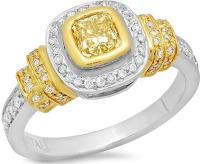
|
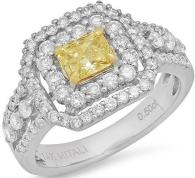
|
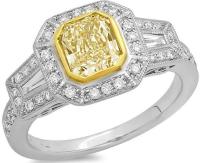
|
||
| 18k Two Tone Gold 0.80CTW Diamond Ring | Eternity Diamond Ring Co 18k Gold 1.03CTW Diamond Rings for Women | 18k Two Tone Gold 1.37CTW Diamond Ring |
Click On The Images
When it comes to diamonds, lesser the color, higher the grade. The GIA color scale classifies diamonds from D colorless, to Z light yellow or Brown. The color is determined by comparing each diamond to a master set of diamonds that represent the standard color scale.
For the purpose of gradation, a diamond should be a loose stone. Once a diamond is set into metal, the metal can affect its color and influence the grade. The diamond is placed table-down, pavilion-up & examined under a 10 times magnification loupe under controlled lighting and precise viewing conditions..
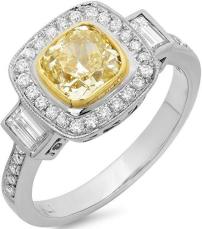
|
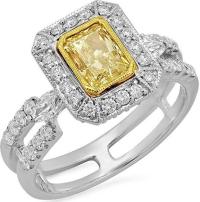
|
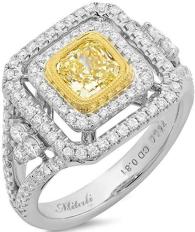
|
||
| 18k Two Tone Gold 1.79CTW Diamond Ring | 18k Two Tone Gold 1.97CTW Diamond Ring | 18k Two Tone Gold 1.75CTW Wedding and Engagement Diamond Ring |
Click On The Images
A system of lettering from D to Z is used to determine the quantity of color in a diamond. The highest color grade is ‘D’ which is awarded only to completely colorless diamonds which are extremely rare.
The above grades do not apply to fancy colored diamonds which have their own separate color grading standards.
What Color is Right for Myself?
For the perfectionist, seek out a colorless diamond with a grade of D – F with no discernible color.
Double Halo Cushion GIA Diamond Platinum Engagement Ring
Click On The Image
For an excellent value in a diamond with little or no visible color to the naked eye, go for a near colorless gemstone of grade of G – I.
Grade D (Colorless) Are 100% Colorless. This color grade represents the highest color grade and represents only the extremely rare and most expensive diamonds.
Grades E & F (Colorless) Are Exceptionally Transparent. Only a trained gemologist can detect color differences between D, E, and F colored diamonds when compared side by side; and very rarely by the untrained eye. These diamonds are still very rare and quite costly.
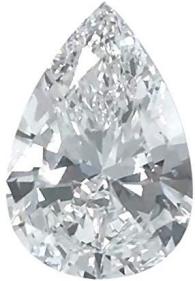
|
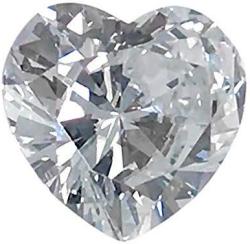
|
|
| Albert Hern 3.96 cts E VS1 GIA Certified Natural Diamond Pear Brilliant Shape | 3.02 cts E VVS2 GIA Certified Natural Diamond Heart Brilliant Shape |
Click On The Images
Grades G & H (Near Colorless) Are Nearly Colorless. The tinting of these diamonds is apparent only when compared to a master stone of a higher color grade. Or else, their color is virtually imperceptible to the naked eye. This too is a rare diamond but is less expensive.
Grades I & J (Near Colorless) Are Nearly Colorless, but with a slightly more visible color tint. Once again, color tint is imperceptible to the naked eye when viewing the diamond in a mounted setting. These diamonds are not so rare & offer an extraordinary value for money. They can be acquired for half the price of a D colored diamond.
Grades K, L & M (Faint Yellow): Have a color tint that is more perceptible to the naked eye. In terms of pricing, these stones are usually half the price of a G colored diamond and can still be very fiery and beautiful.
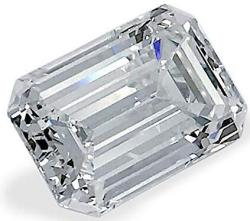
|
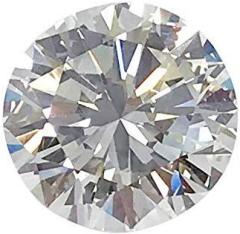
|
|
| 5.41 cts H VVS1 GIA Certified Natural Diamond Emerald Cut Shape | 6.67 cts J VS2 GIA Certified Natural Diamond Round Brilliant Shape |
Click On The Images
Grades N, O, P, Q & R (Very Light Yellow): Have a very light to light yellow noticeable color. Not typically sold as gemstones however they can be used in jewelry for a substantially lesser price.
Grades S, T, U, V, W, X, Y and Z (Light Yellow To Brown):Again an easily noticeable light yellow or brown tint. Usually not kept by jewelers or sold as gemstones but can be used in jewelry for a significant price reduction.
GIA F-SI1-2.89 Three Stone Diamond Engagement Platinum Ring
Click On The Image
The Clarity Attribute Of a Diamond:
The second C is clarity. It is the least important attribute of the diamond among the four Cs. It is the measure of how well a diamond is able to play with incident light and an evaluation of a diamond’s flaws and impurities.
A diamond is considered of the highest quality if it is virtually free of interior or exterior inclusions (referred to as flaws). There is no interference with the passage of light through such a flawless diamond. To determine a diamond’s clarity, it is viewed under 10x magnification by a trained gemologist.
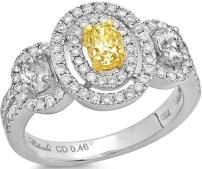
|
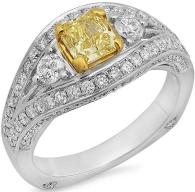
|
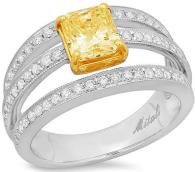
|
||
| 18k Gold 1.39CTW Diamond Wedding or Engagement Ring | 18k Gold 1.8CTW Diamond Jewelry Ring | Diamond Ring 18k White Gold 1.83CTW Light Yellow Ring Ideal for Wedding and Engagement |
Click On The Images
Small inclusions neither mar its beauty nor endanger its durability. The GIA clarity grade includes 11 clarity grades ranging from FL (Flawless) to I-3 (Included). Flawless indicates that there are no inclusions or blemishes visible at ten times magnification. A grade of I-3 is for diamonds with inclusions that are obvious to the naked eye.
ten time magnification loop and a microscope are used to see and plot the inclusions since no two diamonds are exactly alike. This unique plot helps to identify a particular stone. Graders also look to see if there is any evidence that our diamond was treated to improve its clarity.
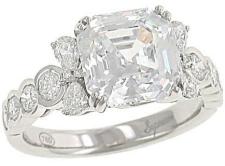
|
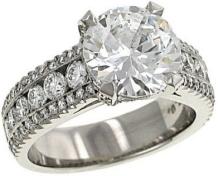
|
|
| Pear and Round Diamond Engagement Ring | 3 Row Diamond Engagement Ring |
Click On The Images
Grade FL (Flawless): The FL grade diamonds are completely flawless. Flawless diamonds are very very rare.Nevertheless, a diamond does not have to be flawless to be gorgeous. VVS (Very Very Slightly Included) and VS (Very Slightly Included) grade diamonds make a superb choice for looks as well as value. Diamonds with no inclusions visible to the naked eye between the grades SI1 and SI2 are called eye clean diamonds, are more affordable and make great choices.
Grade IF (Internally Flawless): IF grade diamonds are Internally flawless. Though external flaws are present, they can be removed by skilled polishing of the stone.
Click On The Images
Grades VVS1 – VVS2 (Very Very Slightly Included): A professional gemologist can spot the flaws under ten times magnification.
Grades VS1 – VS2 (Very Slightly Included): You can spot the flaws under ten times magnification with great difficulty.
Grades SI1 – SI2 (Slightly Included): You can spot the flaws under ten times magnification easily.
Note: Any diamond from the SI2 clarity grade and above is considered eye clean, meaning that you should not be able to see any inclusions without magnification. If you can see an inclusion without magnification, it is not in the above grades.It is important to note that there are some in the diamond industry who abuse the clarity grades by inventing a new grade SI3. They call it a “high I1” clarity grade or a “low SI2,” which are not recognized by the GIA or AGS and does not exist in genuine gemological circles. The abuse of this SI3 grade by some jewelers, who simply take I1 stones and try to gain profit by calling them a SI3, has become widespread. So be careful about anyone trying to sell you a diamond with a clarity grade of SI3.

|
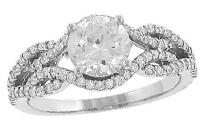
|
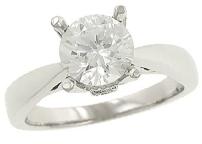
|
||
| Fine Jewelry Graduated Round Diamond Rg w Pave Prongs .90ct(cz ctr | Diamond Engagement Ring | Fine Jewelry Solitare Diamond Engagement Ring |
Click On The Images
Grades I1, I2, I3 (Included): Flaws are visible to the naked eye.
There are three rules of thumb to go by regarding the I1 – I2- I3 grades:
1) Any diamond with an eye visible inclusion should be classified as an I1.
2) If the diamond has an eye visible inclusion that significantly detracts from the beauty of the diamond, or could potentially endanger the stone, it should be classified as an I2.
3) If the diamond has an eye visible inclusion that detracts from the beauty of the diamond and endangers the diamond, that stone should be classified as an I3.
Double Halo Diamond Engagement Ring
Click On The Image
While Flawless diamonds are the rarest, a diamond does not have to be flawless to be stunning. Diamonds with VVS and VS grades are excellent choices for both value and appearance. More affordable (and still a great choice) are those diamonds which gemologists call “eye-clean” – diamonds with no inclusions visible to the naked eye. These diamonds are SI1 and SI2 and unless the recipient carries a 10X loupe (a strong jewelry magnifying glass), she won’t see the inclusions.
You can save lot of money by buying a diamond that is well proportioned, with good color, but is in the SI1 or SI2 clarity range. A perfectly cut diamond of D color and SI2 clarity will look the same to everyone around you as a perfectly cut diamond of D color VS1. However, the SI2 diamond could save you thousands of dollars.
The Cut Attribute Of a Diamond:
The third C is the cut of the diamond which is the most important among all the four Cs.
It is also the most difficult to compute, understand, visualize and agree upon. After all, it took 15 years of research and discovery for the GIA (Gemological Institute of America) to develop a scientific way to assess and predict the cut quality in round brilliant cut diamonds.
Don’t confuse “cut” with “shape.” Shape refers to the actual, physical outward appearance of the diamond, such as round, emerald, or pear.
Shapes Of A Diamond
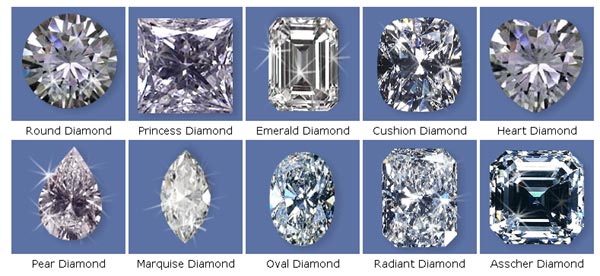

The Asscher cut diamonds (also known as square emerald cut diamonds), blaze with a clear and geometric beauty comparable to their emerald cut diamond counterparts. Come, luxuriate in the best of both cuts!
Cut means a different thing altogether. Cut (as opposed to the shape) refers to the exact proportions of the diamond. Determining the quality of cut depends on the balance of proportions between the various parts of a diamond.
Click On The Images
For example, what percentage of a diamonds diameter is its depth? What are its different angles and how do they interact with each other? While the questions seem vague, these are the crucial factors that determine the beauty of your diamond.
Only when precisely calculated planes and angles are used in a diamond cut does the diamond attain its greatest possible beauty. These precisely calculated planes and angles are called the cut proportions of diamond.
Visual Representations Of The Different Parts Of A Diamond

**********
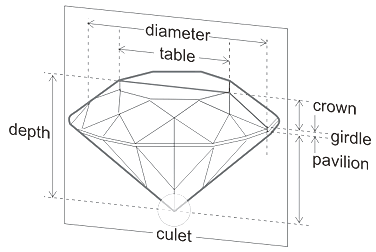
**********
An Illustration Of Proportions Of Parts Of A Diamond
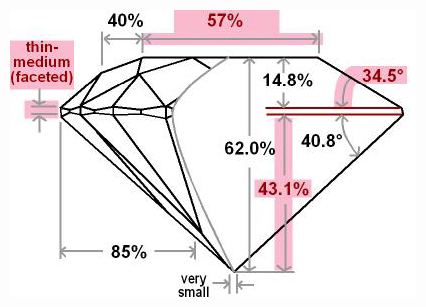
**********
What makes the situation more complicated (or reassuring whichever way you look at it) is that there is no particular single set of proportions that define a well-cut diamond. A case in point being: decrease in the angle of the pavilion of a diamond can be compensated by an increase in the angle of its crown. Research has conclusively shown that there are many different sets of proportions that can yield beautiful diamonds.
Halo Design Diamond Engagement Ring
Click On The Image
The beauty of the diamond comes from the way the diamond absorbs and returns the incident light back to your eye. The efficiency of a diamond to return incident light back to the viewer’s eye is established by its cut.
In a well cut diamond, light enters the diamond from the top, refracts around inside the diamond and comes back out from the top and reaches your eye. As a result, you get maximum brilliance, maximum fire, maximum scintillation, maximum sparkle and many other beautiful words could be used to go on. But really, you get the beauty, fire, flash and excitement out of this well cut diamond.
Most gemologists agree that the best cut diamonds are those that follow a set of formula calculated to maximize brilliance. These formula can be seen in a diamond’s proportions.
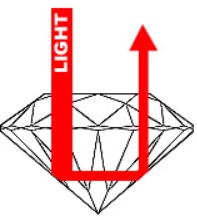
Well Cut Diamond: If a diamond is well cut this is how the light will travel through the diamond. The light strikes each pavilion facet at an angle which allows most of the light to reflect back to the crown. As it passes through the crown facets at a low angle, the light refracts upon exit. In this case, refraction is a good thing, as the bent light travels to the observer’s eye and is perceived as a lively fire. In addition to appearing more brilliant, well-cut diamonds can also appear larger than other stones of the equivalent carat weight.
A diamond with a good cut has both, increased brilliance & larger diameter as compared to more deeply cut diamonds. Cut makes a diamond more exciting, more spectacular or more antique looking. It can mean the difference between a diamond that sparkles like a star and one that is as lifeless a lump on a log.
In a poorly cut diamond, the proportions are skewed or incorrect. One side might be longer than the other and your diamond could be lopsided. Poorly cut stones look dark and dull, irrespective of their color or clarity.
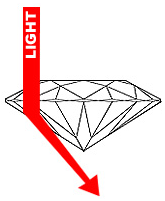
Shallow Cut Diamond: If a diamond is cut too shallow this is how the light will travel through the diamond. Entering light strikes the pavilion facet at a low angle and passes through the facets, escaping through the bottom of the diamond. This causes loss of brilliance, scintillation and fire.
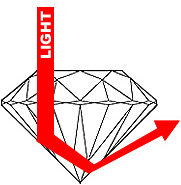
Deep Cut Diamond: If a diamond is cut too deep this is how the light will travel through the diamond. As the light strikes the first pavilion facet at an angle sharp enough to reflect to the second pavilion. But the light strikes the second pavilion at too low an angle, causing the light to refract and pass through the facets, it then escapes through the bottom part of the diamond.This causes loss of brilliance, scintillation and fire.
The GIA Diamond Cut Grading System assigns one of the following five grades to describe the overall cut quality of a standard round brilliant diamond. The cut grades namely are: Excellent, Very Good, Good, Fair And Poor.
Each diamond is placed in a highly precise measuring device that rotates the stone 360 degrees to optically capture hundreds of measurements and facet angles.
After years of research, a comprehensive system has been developed that factor a diamonds proportions as well as it culet size, girdle thickness, polish, symmetry descriptions etc. and a cut grade is generated.
A poorly cut diamond with great carat weight will be much less valuable.
The cut grade is generated on the basis of of seven components. The first three appearance-based aspects are:
Prism Jewel 1.00 Carat Round Multi Color Diamond Anniversary Band
Click On The Image
Brightness (or Brilliance): Brilliance of a diamond is defined as the intensity of the internal and external reflections of white light to the eye from a polished diamond (or other gem) in the face-up position.
Click On The Images
The face-up position is the usual viewing position of a diamond with the viewer looking from a position that is nearly perpendicular to the gem’s table.
It is pertinent to note that brilliance has been defined as the “intensity of light return”. This measure is a single value and lacks details about variations in intensity across the diamond. Over the course of time the term ‘brilliance’ has come to be replaced with the term ‘brightness’.
Fire:Fire is defined as the ability of a diamond to split white light into the rainbow colors of its spectrum.
Scintillation: is defined as the on-off, bright-dark sparkle or flashes of light “dancing” off the crown of a diamond when the diamond is moved or when the observer moves his/her head.
Click On The Images
The remaining four components related to a diamond’s design and craftsmanship are Weight Ratio, Durability, Polish, and Symmetry.
********************
Girdle Diameter Of A Diamond
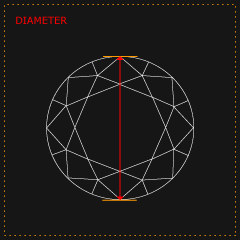
Girdle Diameter Determining average girdle diameter is the first step in evaluating proportions and is the starting point for comparing the diamond’s other proportions.Girdle diameter is the distance measured between two opposite points along the girdle circumference. The minimum & maximum girdle diameters are ascertained by taking a number of diameter measurements.
Average girdle diameter is than calculated using the formula:
Average diameter = (min diameter + max diameter) ÷ 2
Average diameter is useful for calculating percentage values such as table size, total depth, crown height, & pavilion depth.
**********
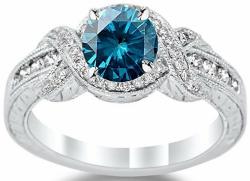
|
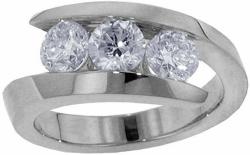
|
|
| Twisting Channel Set Knot Diamond Engagement Ring with a 1 Carat Blue Diamond Heirloom | 1.00 CT TW 3-Stone Channel Set Anniversary Wedding Ring in 14k White Gold (F-G color, VS2-SI1 clarity) |
Click On The Images
**********
Total Depth of a Diamond (Calculated as a Percentage of its average diameter)
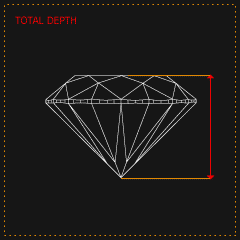
Total Depth of a Diamond (Calculated as a Percentage of its average diameter):Total depth of a diamond is the height of a diamond measured from its table plain to its culet.It is calculated as a percentage of its average diameter using the following formula:
Total depth % = (total depth ÷ avg diameter) x 100
The total depth percentage is an important element of a diamond’s proportions and it is to a great extent responsible for the brilliance displayed by a diamond.
Diamonds having ideal to very fine cut with optimum total depth percentage provide the maximum brilliance.
Yet, proper total depth percentage is not a guarantee of proper cut. Total depth percentage is crucial, but it can sometimes be misleading. It is possible for two diamonds to have the same depth percentage and be proportioned differently.
Total depth percentage is a blend of many other key elements of diamond cut. These elements include crown height, crown angle, pavilion depth percentage, pavilion angle and girdle thickness. These elements are accurately proportioned in ideal cut diamonds.
**********
Click On The Images
**********
Table Size Of a Diamond
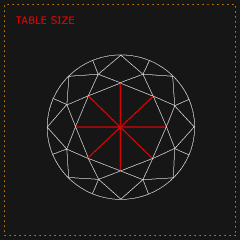
Table Size %
Table size of a diamond is measured from bezel point to bezel point. An average of 4 measurements is computed for further calculation. Proportionate Average Table Size of the diamond is than worked out as a percentage of its Average Diameter as follows:Table % = (Average Table size ÷ Average Diameter) x 100It is rounded off to the nearest whole percentage point (1%).
The Table size attribute is not as crucial to the beauty of a diamond as variations in its crown angle and more particularly in its pavilion angle. AGS and GIA’s new diamond grading systems each have top grades that include 61% table sizes. AGS goes down up to 47% table size in top grade diamonds.
Larger table sizes give two advantages. They make smaller diamonds to appear larger. You get a bigger looking stone for less cash. Also, diamonds with a larger table have a better ‘spread’ and can be brighter, i.e. they return more light.
But these advantages come at a cost. Large table diamonds are often less fiery and they often have less scintillation than diamonds with smaller tables.
18k Gold 2.57CTW Diamond Jewelry, (VS1-VS1/VS1-SI1/G-H)
Click On The Image
Larger table sizes also give rise to the fish eye effect wherein the girdle is seen reflected in the table on the opposite side. It is a ghastly appearance that detracts from the beauty and the value of the diamond.
**********
Crown Angle Of A Diamond
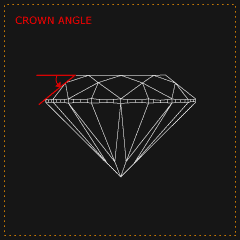
Crown Angle Of a Diamond Crown angle is the angle between a diamond’s bezel facet plane and its table plane.All the 8 crown angles a diamond are accurately measured and an average of all the 8 angles is calculated for adoption while determining a diamond’s cut grade. It is reported to the nearest half of a degree (0.5°).
The crown angle primarily influences dispersion or the fire in a diamond.
The correlation between its crown angle & pavilion angle has the maximum effect on the look of a diamond. A somewhat steep pavilion angle can be balanced by a shallower crown angle, & vice versa.
**********
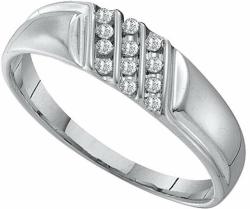
|
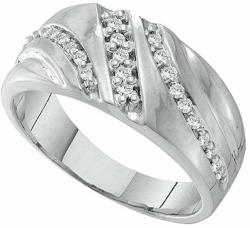
|
|
| 10k White Gold Ring Mens Wedding Diamond Band Three Row Diagonal Stripes Polished Fancy | Solid 10k White Gold Ring Mens Diamond Wedding Band Three Row Curve Style Polished Finish Fancy |
Click On The Images
**********
Crown Height Of a Diamond
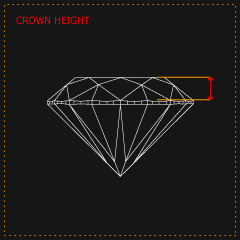
Crown Height Of a Diamond % The crown is the height of the diamond from the girdle edge to the surface of the table facet.Average crown height is calculated as a percentage of its average diameter and is rounded to the nearest half of a percentage point (0.5%). It is calculated using the formula:
Crown height % = (avg crown height ÷ avg diameter) x 100
Crown height can effect both the dispersion and brilliance of a diamond.
**********
Pavilion Angle Of a Diamond
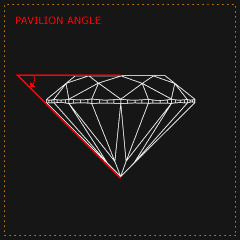
Pavilion Angle Of a Diamond The pavilion angle is the angle of the pavilion facets in relationship to the girdle plane.All 8 pavilion angles are measured and their average is calculated. It is rounded to the nearest multiple of 0.2 degrees and adopted for determining the cut grade.
Average of all eight pavilion angles, reported to the nearest multiple of 0.2° (e.g., 41.0°, 41.4°).
The pavilion angle is a very important element of a diamond’s proportions and it is largely responsible for the amount of brilliance that a diamond will display.
**********
Pavilion Depth Of a Diamond
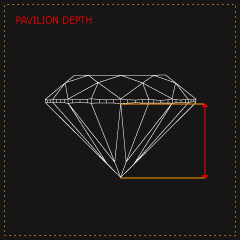
Pavilion Depth Of a Diamond The pavilion depth is the measurement between the top edge of the pavilion (where the lower edge of the girdle ends) and the culet.Average pavilion depth relative to the average diameter is calculated using the formula:
Pavilion depth % = (avg pavilion depth ÷ avg diameter) x 100
It is rounded off to the nearest half of a percentage point (0.5%).
**********
Star Length Of a Diamond
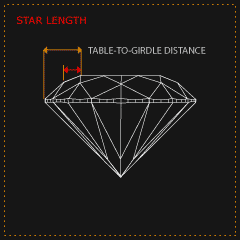
Star Length Of a Diamond The horizontally projected distance from the point of the star facet to the edge of the table, relative to the distance between the table edge and the girdle edge. This is averaged for all 8 star facets and reported to the nearest five percent (5%).
**********
Lower Half Length Of a Diamond
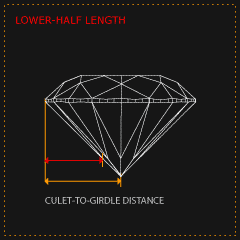
Lower Half Length Of a Diamond The horizontally projected distance from the point where two pavilion mains meet to the closest edge of the girdle, relative to the distance between the girdle edge and the center of the culet. This is averaged for all 8 lower-half facets and reported to the nearest five percent (5%).
**********
Girdle Thickness Of a Diamond
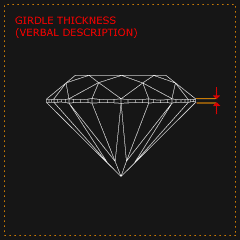
Girdle Thickness Of a Diamond The girdle is the outer edge of a diamond located at the periphery of a cut stone. It is the dividing line where the crown meets the pavilion, the part that is normally grasped by the setting or mounting.Girdle thickness is either described in words as a range from the thinnest to the thickest “valley” areas (descriptions comprise extremely thin, very thin, thin, medium, slightly thick, thick, very thick, and extremely thick) or as a percentage of the diameter (e.g. thin = .6% or thick = 3.0%).
“Extremely thin” appears as a knife-edge; that is, the crown meets the pavilion with no girdle in between.
The best girdle thickness is Thin, Medium or Slightly Thick. There is almost always some variation in girdle thickness around a stone.
If the girdle has extremely thin or very thin areas, do not set them in exposed areas in rings. Thin parts are prone to getting cleaved or chipped by an accidental blow. These stones are acceptable in pendants and earrings, but there still exists a risk of the girdle getting chipped during setting process.
Diamond Girdle Thickness
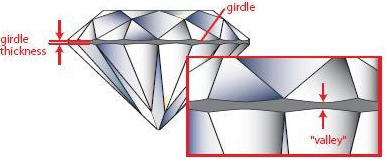
**********
Culet Size Of a Diamond
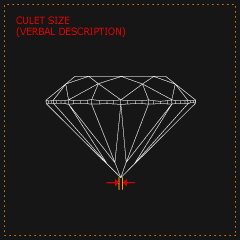
Culet Size Of a Diamond The bottommost point on a diamond’s pavilion is called a culet. It is either pronounced as que-let or que-lay.Culet size is described & reported by GIA Laboratory as the average width of the culet relative to the average diameter of the girdle.
Descriptions include none, very small, small, medium, slightly large, large, very large, and extremely large. “None” is used when there is no culet facet, which is also referred to as a pointed culet.
Large to extremely large culets may be visible to the naked eye and can look like an inclusion.
The Carat Weight Attribute Of a Diamond: The fourth C is carat weight. Carat is the term used to express the weight of a diamond. One carat equals 200 milligrams or one fifth of a gram in weight. Each diamond is placed in a sealed chamber and weighed on an extremely precise electronic scale to the fifth decimal place.
Since a carat is a unit of measure and not size, two diamonds of the same carat weight may appear to be of different sizes. Diamonds can range in size from a fraction of a carat to several carats.
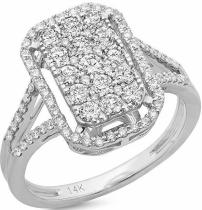 |
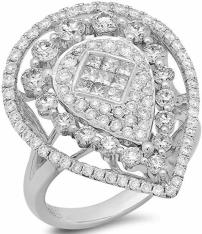 |
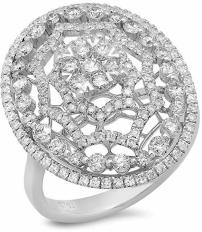 |
||
| 14k Gold 0.99CTW Ring | 18k Gold 2.17CTW Diamond Ring | 18k White Gold 1.46CTW Diamond Ring |
Click On The Images
Good quality larger stones are extremely rare and much more in demand than smaller diamonds of the same quality. As such, the price of a diamond rises rapidly with size. A single two carat diamond will cost much more than two 1-carat diamonds. A one carat diamond solitaire ring is almost always more expensive than a diamond ring with multiple diamonds that are similar, but smaller, even though they may weigh a total of one carat or more.
Diamonds that weigh just under the next full carat are typically less expensive than diamonds passing the full-carat barrier. To get a good value try to find a diamond that weighs 9/10ths of a carat rather than a full 1-carat, or 1.90 carats rather than a full 2-carats, and so on. When set, the difference is not perceptible but you will enjoy a big saving in cost.
 |
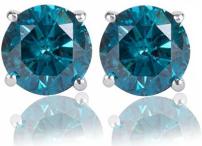 |
| Diamond Jewel 14K Gold Round Diamond Stud Earrings | Blue Diamond Solitaire Screw Back Stud Earrings Pair in 14k White Gold |
Click On The Images
The diamonds four Cs along with a wealth of additional information appears on its grading report. It provides a unique blueprint of a diamonds attributes and a permanent record of its quality. You can use this grading report as a guide for choosing your diamond. The act of choosing your diamond should be exciting and enjoyable. Just keep the four Cs in mind.
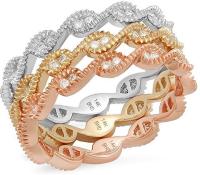
|
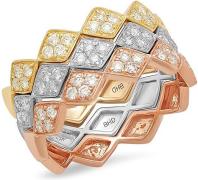
|
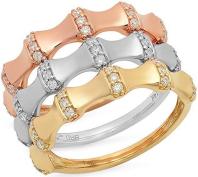
|
||
| 14k Gold 0.51CTW Diamond Ring | 14k Gold 0.77CTW Diamond Ring | 14k Gold 0.43CTW Diamond Ring |
Click On The Images
Click On The Images
Read More Articles About Diamonds
See Also:
| Fascinating Facts About Diamonds Straight From Tiffany & Co’s Chief Gemologist |
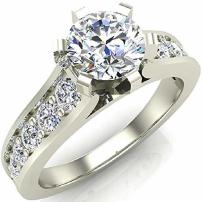 |
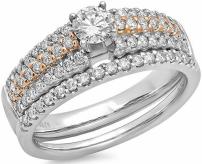 |
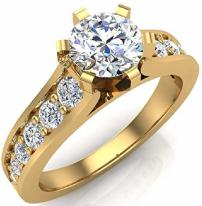 |
||
| 1.00 ctw Riviera Shank Diamond Engagement Ring 18K Gold | 14k White and Rose Gold 0.90CTW Diamond Ring | 1.00 ctw Riviera Shank Diamond Engagement Ring 18K Gold |
Click On The Images
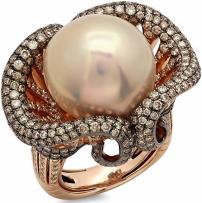 |
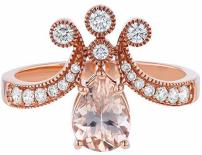 |
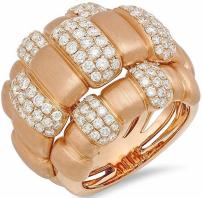 |
||
| 18k Rose Gold 36.66CTW Pearl, Brown Diamonds and Diamond Ring | 14K Rose Gold Pear Shape Morganite and Diamond Engagement Ring | 18k Rose Gold 1.74CTW Diamond Ring |
Click On The Images
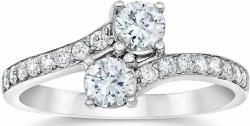
|
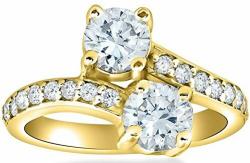
|
|
| Two Stone Round Diamond 1.00Ct Solitaire Ring 14k White Gold | 2 Ct Forever Us 2 Stone Diamond Engagement Ring 14k Yellow Gold |
Click On The Images
